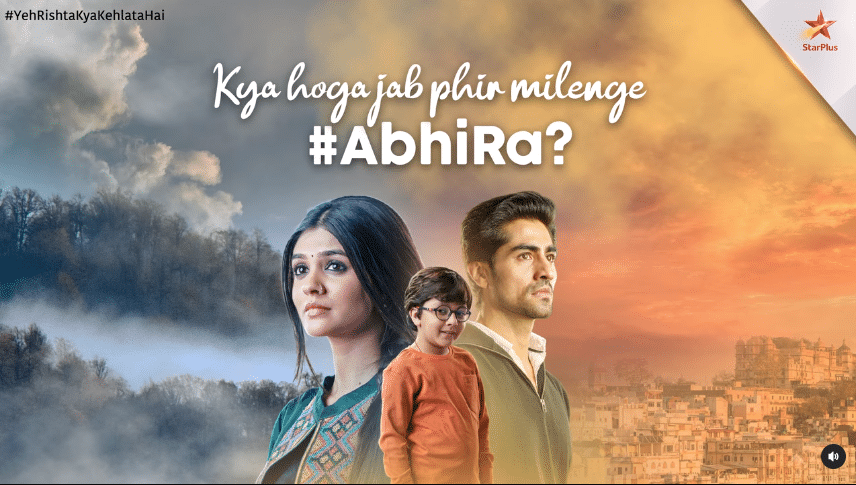CAST: Tusshar Kapoor, Swastika Mukherjee, Mouni Roy, Anu Malik, Urfi Javed, Paritosh Tiwari, Bonita Rajpurohit, Abhinav Singh, Swaroopa Ghosh, Nimrit Ahluwalia
DIRECTOR: Dibankar Banerjee
“LSD 2” is a film that vibrates with the immediacy of contemporary concerns while casting an eye toward the future. Emerging from the same creative essence as its precursor, this sequel brings a frenetic energy that acknowledges the profound changes the world has experienced over the past decade.
Whereas the characters in the original “LSD,” the first Indian film shot digitally, were still exploring their relationship with the camera, almost treating it as an unfamiliar toy, those in “LSD 2” are fully adapted to its constant presence. In this film, the camera transcends its role as a mere character to become the central element of the storyline.
Consider the first segment of “LSD 2,” which employs a structure of three interconnected parts. The segment revolves around a reality TV show named “Truth Ya Naach,” a clever blend of the voyeuristic allure of “Bigg Boss” and the kinetic energy of “Dance India Dance.” On this show, contestants must either reveal a truth or dance to avoid elimination, with the charismatic trio of Anu Malik, Sophie Choudry, and Tusshar Kapoor serving as judges—a stroke of casting brilliance. This setup suggests that truth-telling and dancing are equally captivating forms of entertainment. Among the contestants is Noor (Paritosh Tiwari), a dancer transitioning to a woman. Her journey towards acceptance by her mother (portrayed compellingly by Swaroopa Ghosh) unfolds publicly, captivating the nation’s viewers.
In the second segment, the story shifts to a transgender toilet cleaner at a metro station, Kullu (Bonita Rajpurohit), who is discovered in a battered condition in a field by an influencer during a walk with his dog. The broadcasting of Kullu’s plight not only garners the attention of higher authorities but also draws critical scrutiny from the police, dramatically altering her life.
The third segment focuses on Shubham (Abhinav Singh), a teenage gamer known by his online alias GamePaapi, who has crafted his entire existence around the camera. He portrays his albino uncle as a cosmopolitan manager who has returned from abroad, adding an exotic flair to his online persona. His millions of followers are deeply engaged with his life. Shubham plays virtual games with them, interacts frequently, and presents a more exaggerated version of himself. However, his online identity comes under scrutiny when some of his deepfake videos, which hint at queerness, start circulating.
Written by Prateek Vats and Shubham, the creative minds behind the acclaimed “Eeb Allay Ooo!” along with Banerjee, “LSD 2” unfolds like a frenetic fever dream deliberately crafted to mirror the digital turmoil we navigate daily, and it ominously hints at a dystopian future we are racing toward. Scenes transition rapidly, reflecting our dwindling attention spans, and the camera becomes a colossal symbol of the myriad screens that dominate our lives. This film operates within such a framework: a constant barrage of sensory overload mimics the overwhelming audiovisual language we’ve become accustomed to digesting. (Anand Bansal from “Gamak Ghar” and Riju Das from “All That Breathes” serve as cinematographers). Whether it’s a news channel adorned with a news ticker, sidebar ads, viewer polls or a YouTube page filled with eclectic video suggestions like an “underarm pinching contest,” the interface is crammed with stimuli.
“LSD 2” not only mirrors our screen-filled reality but also refrains from sanitizing its raw and unfiltered portrayal with neutral objectivity. The film’s creative choices are informed by our voyeuristic tendencies—what it displays closely mirrors what we are compelled to watch. Central to the three narrative segments are characters representing diverse social identities: a transitioning woman, a transgender woman, and a dominant, profanity-spewing gamer. By focusing on these lives, Banerjee not only reflects our voyeuristic impulses but also provokes our more intrusive curiosities.
The more disconcerting aspect of “LSD 2” isn’t merely the film confronting us with our private fascinations but the filmmaker’s meticulous narrative construction, suggesting mutual scrutiny between us and the camera. The interaction is less invasive and more collaborative, resembling a dance on good days and a duel on challenging ones. This dynamic is vividly illustrated in the first segment, where the actions of reality show contestants are not only performed for an audience but also shaped by their real-time votes and reactions. Noor, for example, orchestrates her reality—a love triangle involving a roommate and her mother—to captivate the audience. At one moment, a judge stands and exclaims in awe, “What a reality!” “LSD 2” paints a world dominated by cameras, where reality becomes an escape from realism, and the images we project and perceive form the sole truth.
The film’s narrative intricacy is further revealed in how it handles its characters, like an affluent single mother (Swastika Mukherjee) who champions a transgender woman only until her sense of morality is unchallenged. Once crossed, she not only pulls back but actively opposes, similar to a young influencer retreating into the digital realm after facing cyber abuse. The film shot through point-of-view perspectives, enhances this theme, making the viewer actively participate in this layered examination of reality and perception.
“LSD 2” is not without its flaws. The film becomes increasingly chaotic as it progresses and ultimately struggles with coherence. Yet, its form deliberately reflects the subtext it seeks to convey. The movie portrays the bewildering digital landscape we now navigate—a world that often defies understanding. Banerjee’s latest film poignantly captures what India observes and what is broadcast to it. It shows a news anchor clumsily wielding a virtual reality headset on live TV and the live-streamed plight of a battered transgender woman garnering views. Yet, amidst this, there’s a subtle hint of what remains unseen by the Indian public. These are the moments the camera misses; even if captured, they are the stories that people do not engage with—no likes, shares, or downloads. This gap reveals the selective visibility and invisibility within our media-saturated environment.






